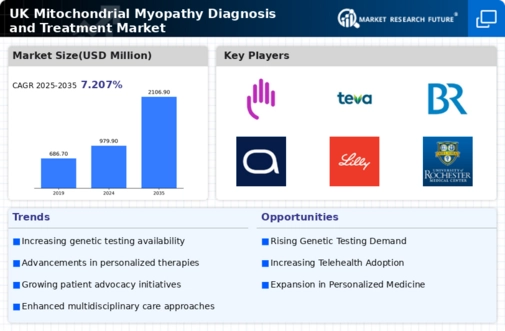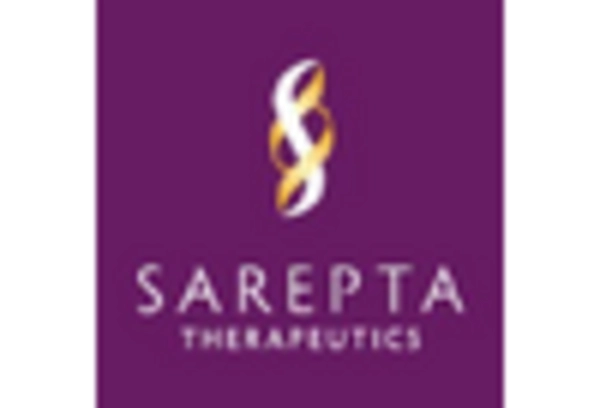Increased Awareness and Advocacy
The growing awareness and advocacy for mitochondrial diseases in the UK play a pivotal role in shaping the mitochondrial myopathy-diagnosis-treatment market. Patient advocacy groups and non-profit organizations are actively working to educate the public and healthcare professionals about these disorders. This heightened awareness is likely to lead to earlier diagnoses and increased demand for treatment options. Furthermore, advocacy efforts may influence healthcare policies, ensuring that mitochondrial disorders receive the attention they deserve within the healthcare system. As more individuals become informed about the symptoms and implications of mitochondrial myopathy, the market is expected to experience growth driven by patient demand for effective diagnostic and therapeutic solutions.
Growing Investment in Rare Disease Research
The surge in investment for rare disease research in the UK is a significant driver for the mitochondrial myopathy-diagnosis-treatment market. Government and private sector funding have increased, with the UK government committing over £500 million to support research initiatives aimed at understanding and treating rare diseases, including mitochondrial disorders. This financial backing fosters innovation in drug development and diagnostic methodologies, potentially leading to breakthroughs in treatment options. As research progresses, the mitochondrial myopathy-diagnosis-treatment market is likely to expand, offering new therapies and improving patient care. The collaboration between academic institutions and pharmaceutical companies further enhances the research landscape, driving market dynamics.
Regulatory Support for Innovative Therapies
Regulatory support for innovative therapies is emerging as a key driver in the mitochondrial myopathy-diagnosis-treatment market. The UK regulatory framework is increasingly favorable towards the approval of novel treatments for rare diseases, including mitochondrial disorders. Initiatives such as the Early Access to Medicines Scheme (EAMS) allow patients to access promising therapies before full market authorization. This regulatory environment encourages pharmaceutical companies to invest in research and development, potentially leading to the introduction of groundbreaking treatments. As more innovative therapies gain approval, the mitochondrial myopathy-diagnosis-treatment market is likely to expand, providing patients with new options and improving overall health outcomes.
Rising Prevalence of Mitochondrial Disorders
The increasing incidence of mitochondrial disorders in the UK is a crucial driver for the mitochondrial myopathy-diagnosis-treatment market. Recent estimates suggest that mitochondrial diseases affect approximately 1 in 5,000 individuals, leading to a growing patient population requiring diagnosis and treatment. This rise in prevalence necessitates enhanced diagnostic tools and therapeutic options, thereby stimulating market growth. As awareness of these disorders expands among healthcare professionals and the public, the demand for specialized services and treatments is likely to increase. Furthermore, the need for comprehensive care pathways for affected individuals may lead to the development of new healthcare policies, further driving the mitochondrial myopathy-diagnosis-treatment market.
Technological Innovations in Diagnostic Tools
Technological advancements in diagnostic tools are significantly impacting the mitochondrial myopathy-diagnosis-treatment market. Innovations such as next-generation sequencing (NGS) and advanced imaging techniques have improved the accuracy and speed of diagnosing mitochondrial myopathy. The UK healthcare system is increasingly adopting these technologies, which can lead to earlier detection and better patient outcomes. For instance, the integration of artificial intelligence in diagnostic processes may enhance the efficiency of identifying mitochondrial disorders. As these technologies become more accessible and cost-effective, they are expected to drive market growth by facilitating timely and precise diagnoses, ultimately benefiting patients and healthcare providers alike.

















Leave a Comment